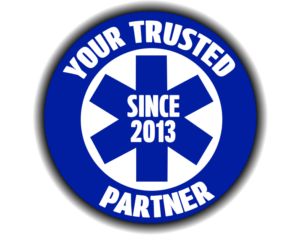
The Evolution of EMS
EMS in America is steeped in history, beginning all the way back to the Civil War era when medical examinations for military personnel were mandated and ambulances assigned based on size of each regiment. These ambulance teams received special training to provide better care for their patients – a precedent that has been carried through until modern day. In 1865 Cincinnati established one of the first civilian ambulances, followed by New York City’s promise of 30 second response time with an accompanying Ambulance Surgeon accompanied by a quart of brandy!
History of EMS
WWI was a groundbreaking period for medical care, as wounded soldiers were able to call upon help with special boxes and medical teams rushed to the aid of their injured brethren in electric, steam or gasoline powered carriages. Moreover, traction splints and other revolutionary medical equipment made an appearance on battlefields around the world for the first time ever. Once hostilities ended, civilian ambulances began popping up all across cities worldwide; complete with physicians at their side ready to respond quickly aided by radio dispatchers providing better services within each community.
Since the 1950s, Emergency Medical Services (EMS) have gone through an incredible evolution towards what we know today. Five distinct industries – towing operators, medical equipment companies, funeral homes, hospitals, and police/fire departments – combined forces to spur this growth. Unfortunately for a long time there was little oversight of EMS operations – meaning that it was mainly up to funeral homes alone who initiated patient care and provided almost half of all ambulances in America!
In 1960, John F. Kennedy labeled traffic accidents as one of the “greatest public health issues” in the United States of America. The National Highway Traffic Safety Act was soon established to ensure uniform training of EMS personnel across all states, necessitate community monitoring for execution and utilization of radio channels between EMTs and dispatchers during critical times, as well as suggest a single emergency phone number people could access in any part of the country.
To expand the EMS program, other federal initiatives were implemented. In 1972, the Health Services and Mental Health Administration under the Department of Health Education and Welfare was appointed as a lead agency for EMS programs. And to further boost it, Physician Responder Program was initiated which eventually evolved into paramedic programs that necessitate close physician supervision.
In 1973, the EMS Systems Act was enacted and the General Services Administration introduced ambulance specifications, providing access to a high-level of medical care.
In 1996, the EMS Agenda for the Future was created, linking EMS with other medical fields. That same year, a plan – referred to as ‘EMS Education Agenda for the Future’ – was set in motion that provided guidance on Core content, Scope of practice and Certification of all professionals related to emergency services.
EMS Today
Prehospital emergency medical care has come a long way. The EMT is now seen as an essential part of the healthcare team, due to improved training programs and focus on continuing education. To ensure standards are met across the board, national benchmarks have been set for ambulance equipment essentials and paramedic program accreditation, in addition to professional associations established exclusively for EMTs.
Facing the unprecedented challenges of the pandemic, EMS clinicians heroically rose to meet them with new and innovative methods of vaccine delivery. These life-saving vaccines were rapidly deployed throughout the nation through EMS and new technologies.
Get the modern-day EMS equipment you need to treat patients
Unparalleled patient care requires access to cutting-edge biomedical and EMS equipment. Coast Biomedical Equipment is the ideal resource for your medical supplies.




